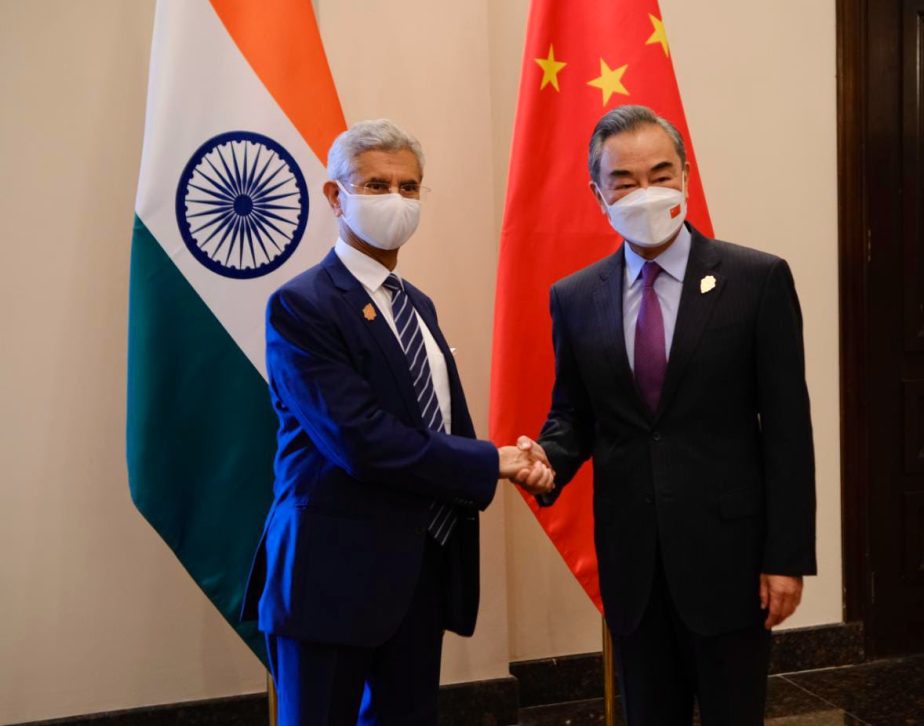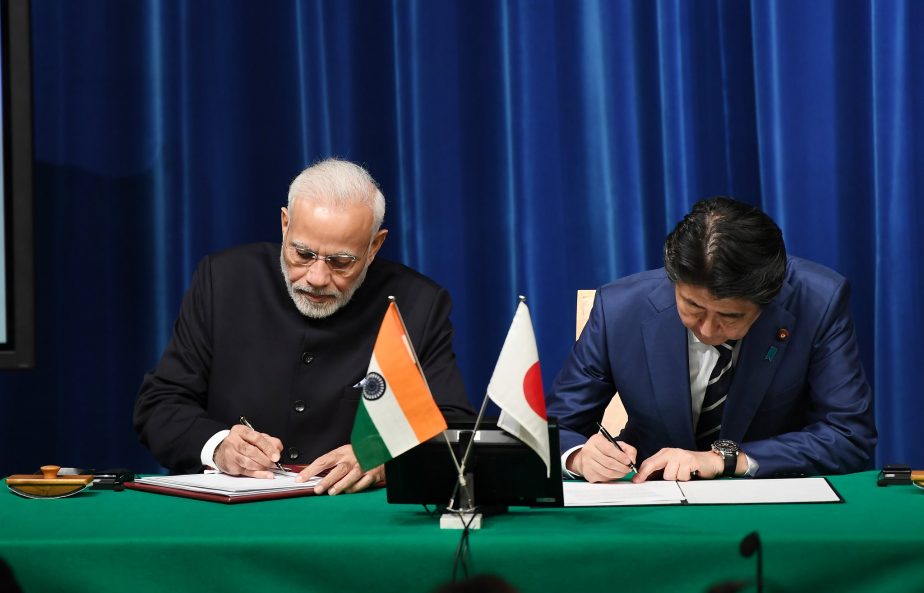Assessing The Promise Of Small Modular Reactors From An Indian Perspective
STRATNEWS GLOBAL
APLN member Manpreet Sethi analyses the expected advantages and challenges of small modular reactors and places them in the context of India’s energy mix. Read the original article here.
The most recent G7 Summit took place in Germany in June 2022. While media attention was primarily focused on the collective response of the powerful economic nations to the Russian invasion of Ukraine, an interesting but less reported announcement was made by the U.S. President Biden in the context of nuclear energy. He stated that the U.S. would commit US $14 million toward a Front-End Engineering and Design (FEED) study to provide the basis for the deployment of a small modular reactor (SMR) power plant in Romania. It was ironic that this announcement was made in Germany, a country that is scheduled to phase out its nuclear power programme this year. Berlin made this commitment in 2011, in the wake of the nuclear accident in Fukushima. It is on track to wean itself away from nuclear energy in toto, despite the severe energy crunch it faces with regard to Russian energy imports.
Even as Germany appears steadfast in its decision against nuclear energy, many other countries are exhibiting a perceptible enthusiasm around the idea of small modular reactors. These are being seen as a solution to some of the traditional challenges of long construction times and high economic costs associated with nuclear reactors. A race is on within the nuclear industry, backed considerably by governments, to work on new designs and manufacturing processes that are expected to prove their commercial viability and become operational within this decade. How realistic is this estimate? What kind of advantages will SMRs offer? What challenges are they likely to face? This article undertakes an assessment of SMRs and places them in the context of India’s energy mix.
What Are SMRs?
SMRs are defined as nuclear fission reactors with a capacity of about 300 MWe or less. As the name suggests these reactors would have two main attributes—small and modular. These are envisaged to be capable of being centrally manufactured at a factory and then transported to the desired site for assembly/ installation. Much like a machine, the reactor would arrive at a site, be plugged in and start producing electricity. They would also offer the possibility of the addition of multiple similar reactors when desired. Also, these could be placed on land, on a ship for off-shore deployment (which are known as floating nuclear power plants) or even in an underground or submerged environment.
Over 70 SMR designs are being developed around the world today. At different stages on the drawing board, these designs range from being slightly modified versions of existing reactors to those involving completely new technologies. Staying abreast of the high level of activity around the new ideas, the International Atomic Energy Agency (IAEA) has set up the SMR Regulators’ Forum to help countries share information on issues of common concern. It published a Technology Roadmap for Small Modular Reactor Deployment in 2021 that identifies, evaluates, and promotes collaboration and knowledge sharing amongst technology developers, industry, users, and regulatory bodies.
Expected Advantages Of SMRs
Speed Of Installation And Cost Savings
One of the main advantages of SMRs is seen in their ability to be manufactured as prefabricated and pre-tested modules that can be easily assembled/installed on-site after being transported conveniently. Modularity in manufacturing and assembly is expected to reduce construction time. The idea, in fact, is to compress a large technological project into a relatively easy installation of a pre-fabricated product of standardised quality. A study in this regard has suggested that SMRs can reduce construction time by 3.5 years in comparison to the average 6.5 years required as of now. Reduced gestation periods are then expected to reduce capital costs too, and thus increase the economic competitiveness of the reactors.
Enhanced Safety And Security Features
Given the new technologies being incorporated by SMRs, these are expected to include enhanced safety and security features. On the safety front, the reactors are being designed to incorporate modern passive safety systems that minimise the need for human intervention in case of emergencies. On nuclear security, they would incorporate the concept of “security by design” to address concerns of sabotage, theft, attacks and proliferation. Since many of these designs are expected to operate for prolonged periods without the need for refuelling, there would be related benefits of reduced risks of transportation of nuclear materials too.
Flexibility Of Installation And Siting
SMRs would provide flexibility in siting options, especially their placement in remote, isolated areas that are currently dependent on diesel generators. Given their compactness, it is envisaged that they would need less land as well as concomitant emergency zone requirements. The addition or removal of new modules as considered necessary would add to the flexibility advantage.
Baseload Power In Support Of Renewables
Nuclear power has the major advantage of being a baseload source of electricity. With the current trend favouring the rapid deployment of renewable energy, SMRs could complement these sources to address their disadvantage of intermittency. So, SMRs could supplement solar, wind, small hydroelectric and tidal generation to ensure a continuous supply of electricity and thus help stabilize the grid. This combination would help overcome the challenge of storage that the use of renewables still poses.
Better Waste Management
Spent fuel management has been perceived as a major challenge for nuclear plants. SMRs are trying to address this by experimenting with new ideas for dealing with nuclear waste. These include fast reactor designs that would ensure higher fuel burnup and hence, a lesser amount of nuclear waste generation, or the travelling wave reactor design that could consume the fuel that it breeds, thereby minimising the need to remove spent fuel. Likewise, other SMR technologies have been trying to develop a thorium fuel cycle, which too could reduce nuclear waste.
Better Resource Efficiency
SMRs are also likely to offer better resource efficiency given their comparatively smaller physical footprint. The requirement for land would be less compared to a traditional nuclear power plant. The latter needs an emergency planning zone extending up to 10 and half miles around the plant. In comparison, SMRs would require just about half a mile. They are also expected to be time-efficient in deployment as well as require lesser maintenance.
Challenges That Persist With SMRs
Supply Chain Maturity & Price Advantage – Long Way Off
Modularity is being touted as the biggest advantage of SMRs. It is expected that SMRs will reap the benefits of serial factory manufacturing, which would enable optimum standardization of components. Pre-assembled modules will simplify on site installation. The problem, however, remains that for factories to sink substantial capital investment into creating the infrastructure for such manufacturing, they would need assurance of a sufficient number of orders. Only then will economic efficiencies emerge. Such orders, as of now, appear distant. It will take time before one particular design from the plethora currently being experimented with is sufficiently field-proven and accepted by a large number of companies, operators, and regulatory bodies. Therefore, the supply chain maturity of SMRs will take time, even a few decades, to emerge.
Tussle Between Industry And Regulators
Given the novelty of the concept, the SMR industry is facing challenges ranging from licencing to liability. The current regulatory regimes are designed for traditional nuclear plants. As the industry seeks changes, they are being met with overly cautious regulators who are not only careful about the novel designs being experimented with, but also conscious of the reality that many players in the SMR space are new to the nuclear industry. Both sides, therefore, are yet to find a level of comfort with each other. Another challenge in this space would emerge when reactors that have achieved design approval in one country are exported for installation in another country as a pre-fabricated product. With design approval secured in one country not automatically becoming acceptable in others, and since different regulators place emphasis on different issues, any demand for design changes would defeat the advantage of modularity and stability of supply chains with pre-fab SMRs. Demands for changes would also drive up the cost of reactors, thereby defeating the purpose of SMRs.
Liability Issues
Liability in the case of an accident at a nuclear plant is also a matter of great concern and contention. The maximum concerns in this regard have been raised in the context of Floating Nuclear Power Plants (FNPPs). The first of these pertains to the very definition of such reactors under the existing conventions. For instance, the Convention on Nuclear Safety (CNS) defines a “nuclear installation” as “any land-based civil nuclear power plant under its jurisdiction.” Experts differ on whether a floating nuclear power plant at the shore or offshore could be considered a nuclear installation under the international third-party nuclear liability conventions. Questions have also been raised about what happens when the FNPP navigates through different maritime zones and high seas. The CNS only refers to the carriage of nuclear substances, i.e. nuclear fuel and radioactive products and waste, not a nuclear reactor. A discussion on the liability regime applicable during the carriage and operation of a nuclear reactor, therefore, becomes imperative. This is especially necessary to facilitate the insurance coverage of such installations and protect potential victims in case a nuclear incident occurs during the journey.
India: The Way Ahead With SMRs
Of the 22 nuclear reactors operational in India today, the majority of the indigenously built ones have a capacity rating of 220 MWe. India also has the experience of having built an 85 MWe reactor for its nuclear submarine. This shows that India has the capability to design, build, and operate small reactors. While it has not utilised a modular factory process so far, the industry involved in manufacturing nuclear equipment can be expected to make this possible in case the nuclear establishment is keen to build such reactors. Cognisant of the potential of SMRs, India’s Department of Energy has design teams working on the technology. Speaking of SMR prospects for the country, KN Vyas, Secretary, DAE and Chairman, Atomic Energy Commission, stated in 2019: “Carrying out the design of new reactor systems and refinement in the already performed design is an ongoing process, which is always under focus to improve the designer’s capability. SMRs also need some technology development to fill up gap areas. Process of technology development also needs to be completed before task related to SMRs can be taken up in a more serious manner.”
While DAE is keeping abreast of SMR developments, its current priority is technological advances in the current stream of reactors. Having graduated from 220 MWe to 540 MWe to 700 MWe, India has striven to reach higher capacity reactors in order to ensure a rapid expansion of nuclear electricity generation. Can SMRs then be attractive for a country like India, where the demand for electricity is only expected to grow? Indeed, while the rationale for large reactors is stronger in India, SMRs too could be useful in a few scenarios. One of these could be to replace old coal plants that need to be decommissioned.
In this regard, Srikumar Banerjee, former Chairman of the Atomic Energy Commission, had rightly stated: “Some of the retiring thermal power plants can be replaced with small modular reactors.” This would also help in combating air pollution problems plaguing the country and in meeting its Paris Agreement goals. In fact, given the high induction of renewable power in a thrust to move towards green technologies, SMRs could supplement this by being a dependable base load and clean source of power.
In view of the above, there are potential uses for SMRs in India. But, given the country’s electricity requirements, it need not feature at the top of the DAE’s priority list. Developed countries that are engaged with SMRs are doing so at a stage where their electricity demand and population growth are mostly stagnant. The new technology development, then, is actually a way for the nuclear industry to keep itself gainfully occupied with a view to popularise new nuclear build for countries where reactor construction has stagnated or where there is potential to export them to nuclear newcomers.
For India to divert any large part of its nuclear resources towards such a technology would be a diversion from its focus, which should be on the quick construction of planned nuclear reactors in order to enhance the country’s electricity supply with an environmentally friendly source. Long-term policy support is needed to bring the planned reactors of larger sizes to fruition and to do so within specified time schedules. Of course, the country must remain engaged with SMR R&D. It may even be useful to engage and incentivise the private nuclear industry to move on this front. In any case, NPCIL does plan to involve private industry in reactor construction and operations. Encouraging them to have joint ventures with foreign companies engaged in SMR R&D may hasten the progress of SMRs in India. Meanwhile, the DAE could focus its resources on the timely completion of its planned 700 MWe reactors. Construction of these reactors in fleet mode would itself offer the advantages of modular construction and be more in tune with the country’s immediate electricity requirements.




